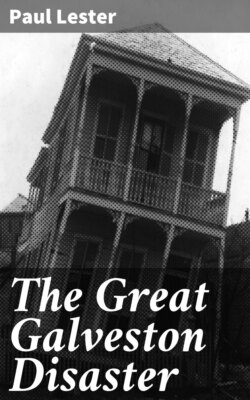Читать книгу The Great Galveston Disaster - Paul Lester - Страница 73
На сайте Литреса книга снята с продажи.
PROTECTION OF GALVESTON A COSTLY PROBLEM.
ОглавлениеTable of Contents
To protect the city of Galveston from the ravages of future cyclones would be almost as costly as to re-establish the city on a new site. This is the opinion of eminent engineers in Washington. To insure the maintenance of the channel it has been necessary to erect jetties, which have cost more than $6,000,000, but these jetties do not furnish any obstacle of value to the invasion of the sea when behind it is a force such as a West Indian cyclone exerts.
Because of the effect of storms upon the Gulf coast it has been customary for engineer officers stationed at Galveston to report yearly upon the appearance of atmospheric disturbances of more than usual intensity, and Captain Rich, the engineer officer, who is believed to have lost his life, stated in his report for 1899 that storms which occurred during April, May and June, 1899, “carried away nearly all that remained of construction trestle and track, and caused more or less settlement of the jetties.”
The need of a safe deep water harbor on the Gulf of Mexico has long been appreciated, and in 1899 Congress passed an act directing the Secretary of War to appoint a board of three engineer officers of the army to make a careful and critical examination of the American coast of the Gulf of Mexico west of 93 degrees and 30 minutes west longitude, and to “report as to the most eligible point or points for a deep harbor, to be of ample depth, width and capacity to accommodate the largest ocean going vessels and the commercial and naval necessities of the country.” The Board consisted of Lieutenant Colonels H. V. Roberts, G. L. Gillespie and Jared A. Smith. The Board reported that Galveston was the most eligible point for a deep harbor, but also called attention to the harbors at Sabine and Aransas Passes as being worthy of consideration.
